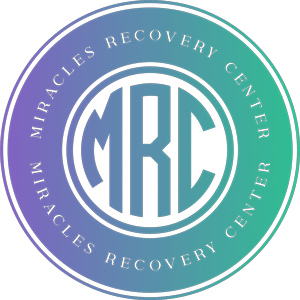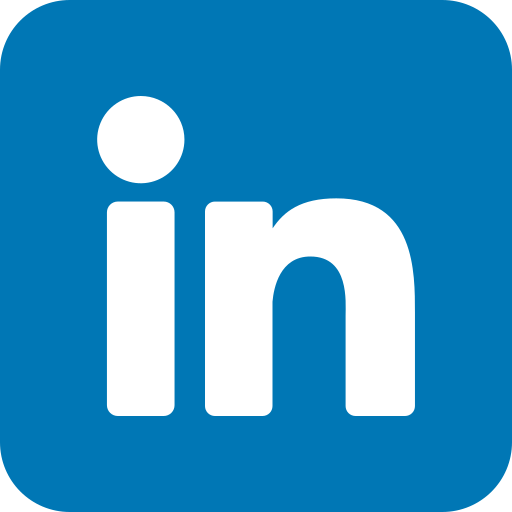Table of Contents
Understanding PHP and IOP Programs
Addiction treatment can be a challenging journey, but understanding the different treatment options available can empower you to make informed decisions. Two popular and effective formats are Partial Hospitalization Programs (PHPs) and Intensive Outpatient Programs (IOPs).
Overview of PHPs
Partial Hospitalization Programs (PHPs) are designed for individuals requiring a higher level of care than traditional outpatient services can provide. PHPs combine structure with flexibility, offering intensive treatment that typically lasts for 4 to 8 hours per day on 5 to 7 days a week, allowing you to return home at night (American Addiction Centers).
This format offers an alternative for those who may not need the constant supervision of inpatient settings. PHPs focus on providing a safe and supportive environment where you can receive therapy, medication management, and other essential services while still having the comfort of sleeping in your own home.
PHPs can be particularly beneficial if you do not require medical detoxification or 24-hour supervision but still need structured support. They can also serve as a more affordable option compared to full residential treatment options, making them suitable for people seeking care that is both effective and accessible (American Addiction Centers).
Benefits of IOPs
Intensive Outpatient Programs (IOPs) provide flexibility for individuals balancing treatment with daily life responsibilities. These programs typically involve less time spent in a treatment facility compared to PHPs, usually offering sessions for 3 to 5 hours per day, several times a week.
IOPs focus on providing essential therapeutic support, including individual and group therapy, coping skills development, and family involvement. This type of structured environment allows you to engage with treatment while still managing work, school, or family obligations.
You can customize your treatment plan based on your personal lifestyle and recovery needs, which is a significant advantage for those who may not require full-time hospitalization. Many IOPs are also designed to accept various insurance plans, making it easier for you to find a program that fits your budget while receiving quality care (iop treatment that accepts insurance).
For more detailed comparisons regarding insurance coverage, check out our article on php vs iop insurance coverage comparison.
Insurance Coverage for PHP & IOP
Understanding the insurance coverage options available for Partial Hospitalization Programs (PHP) and Intensive Outpatient Programs (IOP) is essential for anyone seeking treatment for mental health and addiction. Knowing your rights and the regulations that govern these services can significantly impact your access to care.
ACA Requirements for Coverage
Under the Affordable Care Act (ACA), all rehab insurance policies must cover mental health and substance use disorder services. This means that plans offered through HealthCare.gov cannot place limits on the number of sessions or types of treatments available for mental health or substance use treatment American Addiction Centers.
| Requirement | Description |
|---|---|
| Mental Health Coverage | Must be provided by all ACA-compliant plans |
| Treatment Cap | No limits on the amount of coverage for mental health or substance use treatment |
Such mandates ensure that you can access the treatment options you need, enhancing the likelihood of successful recovery without overwhelming financial concerns.
MHPAEA Regulations and Coverage
The Mental Health Parity and Addiction Equity Act (MHPAEA) plays a crucial role by ensuring that mental health and substance use disorder benefits are on par with medical and surgical benefits. This act requires most insurance plans to provide at least some level of coverage for PHPs. It ensures that the co-pays for mental health specialist visits are not more restrictive than those for medical visits American Addiction Centers.
| Regulation | Key Points |
|---|---|
| Parity Requirements | Mental health benefits must be as comprehensive as medical benefits |
| Co-pay Criteria | Co-pays should be similar for medical and mental health services |
| Coverage for PHPs | Mandatory insurance coverage for partial hospitalization programs |
This regulatory framework allows you to make informed decisions about your treatment options, knowing that there are protections in place to ensure your access to necessary care. For more detailed information about insurance coverage for various treatment types, consider visiting our articles on PHP rehab program covered by insurance and IOP treatment that accepts insurance. Understanding these aspects can empower you to seek the most suitable treatment program for your needs.
Payment Options for PHP & IOP
Navigating payment options for Partial Hospitalization Programs (PHP) and Intensive Outpatient Programs (IOP) can be a daunting task. However, understanding the available government-sponsored plans and Medicare/Medicaid coverage can make it easier for you to access the care you need.
Government-Sponsored Plans
Many treatment centers accept payments from government-sponsored insurance plans such as Tricare, Medicare, and Medicaid. These plans provide viable options for those who qualify, covering essential services under the American Society of Addiction Medicine (ASAM) levels of care, including outpatient services, intensive outpatient therapy, and partial hospitalization (Beecon Recovery).
| Insurance Plan | Coverage Type |
|---|---|
| Medicare | Coverage for partial hospitalization and intensive outpatient services |
| Medicaid | Reimbursement for outpatient services and PHP |
| Tricare | Coverage available for eligible beneficiaries within treatment facilities |
The inclusion of these programs ensures you can access the PHP for mental health and addiction covered by insurance, alleviating some of the financial burdens associated with attending treatment.
Medicare and Medicaid Coverage
Medicare typically covers mental health services, including PHPs for conditions such as Major Depressive Disorder or Bipolar Disorder. Coverage can depend on the specific plan and your clinical needs. Medicaid also plays a vital role, providing reimbursements for various services, including PHP and IOP, tailored to the clinical severity of each recipient.
- Medicare Coverage: PHPs like those for mental health conditions may be covered, and the specifics can vary based on the plan. It’s essential to verify your specific plan’s details.
- Medicaid Coverage: Offers significant support for PHP and IOP treatments. If you qualify, it can cover the costs associated with these programs as stipulated under the ASAM levels of care.
For individuals looking to access PHP or IOP services, it’s beneficial to confirm whether your treatment center is an in-network facility by contacting your provider or reviewing your health insurance plan details. Many plans, including those obtained through the HealthCare.gov Marketplace, cannot cap the amount of mental health treatment covered due to the Affordable Care Act, which further fortifies your access to necessary services (American Addiction Centers).
If you are actively seeking options for an intensive outpatient program covered by insurance, understanding these government-sponsored plans and their coverage types can help you secure the treatment you deserve without overwhelming financial pressure.
Choosing the Right Treatment Program
When it comes to navigating addiction treatment options, selecting between Partial Hospitalization Programs (PHPs) and Intensive Outpatient Programs (IOPs) can be a crucial decision. Understanding the differences and determining what works best for you is essential for effective recovery.
Considerations for PHP vs IOP
Both PHPs and IOPs offer structured support for individuals facing addiction or mental health challenges, but they vary in terms of treatment intensity and daily commitment. Here are some key aspects to consider:
| Feature | PHP (Partial Hospitalization Program) | IOP (Intensive Outpatient Program) |
|---|---|---|
| Treatment Hours | 4-8 hours per day | 3-5 hours, several times a week |
| Setting | More intensive, facilities provide care | Flexible, allows for home life balance |
| Ideal For | Individuals needing more structure and support; safe enough to return home at night | Those with more stable living environments who can manage responsibilities while receiving care |
| Cost Consideration | Often more cost-effective than inpatient treatment, coverage varies | Usually lower cost; similar coverage from insurance |
It’s important to assess your own circumstances, including your daily obligations and the level of support you may require. If your situation calls for more structured, intensive support, a PHP may be the better option. However, if you feel capable of managing certain responsibilities while receiving treatment, an IOP could work well for your needs.
Level of Clinical Severity
Your individual clinical severity is another factor to consider when choosing between PHP and IOP. The American Society of Addiction Medicine (ASAM) has established levels of care, with PHPs typically ranking as Level 2 (or 2.1 or 2.5). This level indicates that PHPs offer slightly less intense care compared to inpatient services but still provide more structured treatment than standard outpatient options, making them suitable for those with moderate to severe conditions.
If you are dealing with severe psychological or substance use issues, PHP might be a stronger fit, as it encompasses a more comprehensive treatment model that includes therapy, medication management, and group support, all conducted in a safe facility setting. It allows you the benefit of immediate support while still returning home.
On the other hand, if your condition is less severe and you have a stable support system at home, an IOP may suffice. It offers the flexibility to balance treatment with personal and professional responsibilities.
Ultimately, the path you choose should align with your specific needs and circumstances. For guidance on insurance-accepted options, consider resources that explain php for mental health and addiction covered by insurance and the specifics of coverage with different providers. This ensures that financial aspects are also part of your decision-making process as you work towards recovery.
Treatment Details and Costs
When considering PHP (Partial Hospitalization Programs) and IOP (Intensive Outpatient Programs), it’s essential to understand the structured treatment elements these programs offer and the associated costs. These details can significantly influence your decision-making process regarding addiction treatment.
Structured Treatment Elements
PHPs are designed to provide a comprehensive array of services. They typically involve a minimum of 20 hours of therapeutic engagement per week but do not require overnight stays. This structure makes them suitable for individuals who seek intensive care without being admitted to a hospital. Services included in PHP often encompass:
- Individual Therapy: One-on-one sessions focused on personal recovery goals.
- Group Therapy: Facilitated discussions that foster community support and shared experiences.
- Family Therapy: Sessions aimed at improving familial relationships and support systems.
- Psychiatric Support: Assessment and management of any mental health conditions that may co-occur with substance use disorders.
- Holistic Approaches: Incorporating alternative therapies like art, music, or mindfulness practices into treatment.
An outline of typical structured elements can be found in the table below:
| Treatment Element | Description |
|---|---|
| Individual Therapy | Personalized sessions targeting specific issues |
| Group Therapy | Sessions promoting shared experiences and support |
| Family Therapy | Engaging loved ones to strengthen support systems |
| Psychiatric Support | Management of co-occurring mental health issues |
| Holistic Approaches | Alternative therapies for comprehensive healing |
Cost Factors and Variations
The cost of PHPs can vary significantly based on several factors, including the intensity of services provided, geographical location, and whether a program is in-network with your insurance provider. Generally, PHP treatment for Substance Use Disorders can range from $10,500 to $13,500 per month depending on the specific treatments and therapies involved (Harmony Recovery Group). For instance, PHPs for mental health conditions under UnitedHealthcare typically fall around $12,000 per month, influenced by the individual care needs and specialized interventions (Harmony Recovery Group).
In contrast, IOPs may have different cost ranges based on their treatment offerings and session frequency. It is crucial to contact your insurance provider for detailed coverage specifics, especially if you are looking for programs with insurance support.
Here is an overview of typical costs associated with PHPs and IOPs:
| Program Type | Monthly Cost Range | Services Included |
|---|---|---|
| PHP | $10,500 – $13,500 | Therapy sessions, medication management, holistic approaches |
| IOP | Varies (~$5,000 – $8,000) | Group therapy, individual counseling, family services |
To learn more about the different types of programs available, you might consider reviewing our page on php for mental health and addiction covered by insurance. When focusing on the costs, consider utilizing our resources to explore outpatient rehab with insurance coverage to find the best options for your treatment needs.
PHP for Specific Mental Health Conditions
PHP for Major Depressive Disorder
If you or someone you care about is struggling with Major Depressive Disorder (MDD), Partial Hospitalization Programs (PHPs) can be a vital resource. PHPs provide structured treatment that typically involves therapeutic services for 4 to 8 hours a day, several days a week, allowing individuals to return home at night while still receiving comprehensive care [American Addiction Centers].
UnitedHealthcare (UHC) usually covers PHP services for MDD and the associated therapeutic approaches. The integrated treatment plans often include evidence-based therapies, such as cognitive-behavioral therapy (CBT), medication management, and group support, all tailored to help alleviate symptoms [Harmony Recovery Group].
| Cost Factors for PHP for MDD | Estimated Monthly Cost |
|---|---|
| Average PHP Treatment Cost | $12,000 |
| Variability Based on Condition Severity | May vary |
Obtaining coverage for PHP treatment can be crucial, especially with the Affordable Care Act ensuring that mental health services must not be capped by insurance plans [American Addiction Centers]. If unsure about insurance specifics, reach out to your provider or consult with the treatment facility about their partial hospitalization program insurance accepted.
PHP for Bipolar Disorder
For those facing Bipolar Disorder, PHPs are effective in managing symptoms and stabilizing mood fluctuations. The structured environment of a PHP can help provide consistent treatment that is crucial for individuals experiencing intense depressive or manic episodes [Harmony Recovery Group].
PHPs focusing on Bipolar Disorder generally include a comprehensive treatment plan that features individualized therapy sessions, family education, and medication monitoring. This level of care helps address the complexities of living with Bipolar Disorder while allowing room for other life responsibilities [American Addiction Centers].
| PHP Treatment Elements for Bipolar Disorder | Coverage Offered |
|---|---|
| Medication Management | Included |
| Individual and Group Therapy | Included |
| Family Support Services | Included |
Insurance often covers PHP services for Bipolar Disorder under plans from providers like UHC, ensuring you have access to critical mental health care. For details on insurance plans that cover PHP treatment, check out available resources on php for mental health and addiction covered by insurance.
Choosing Miracles Recovery Center for these PHP services will connect you with tailored treatment and support, facilitating a path to recovery for mental health conditions.










